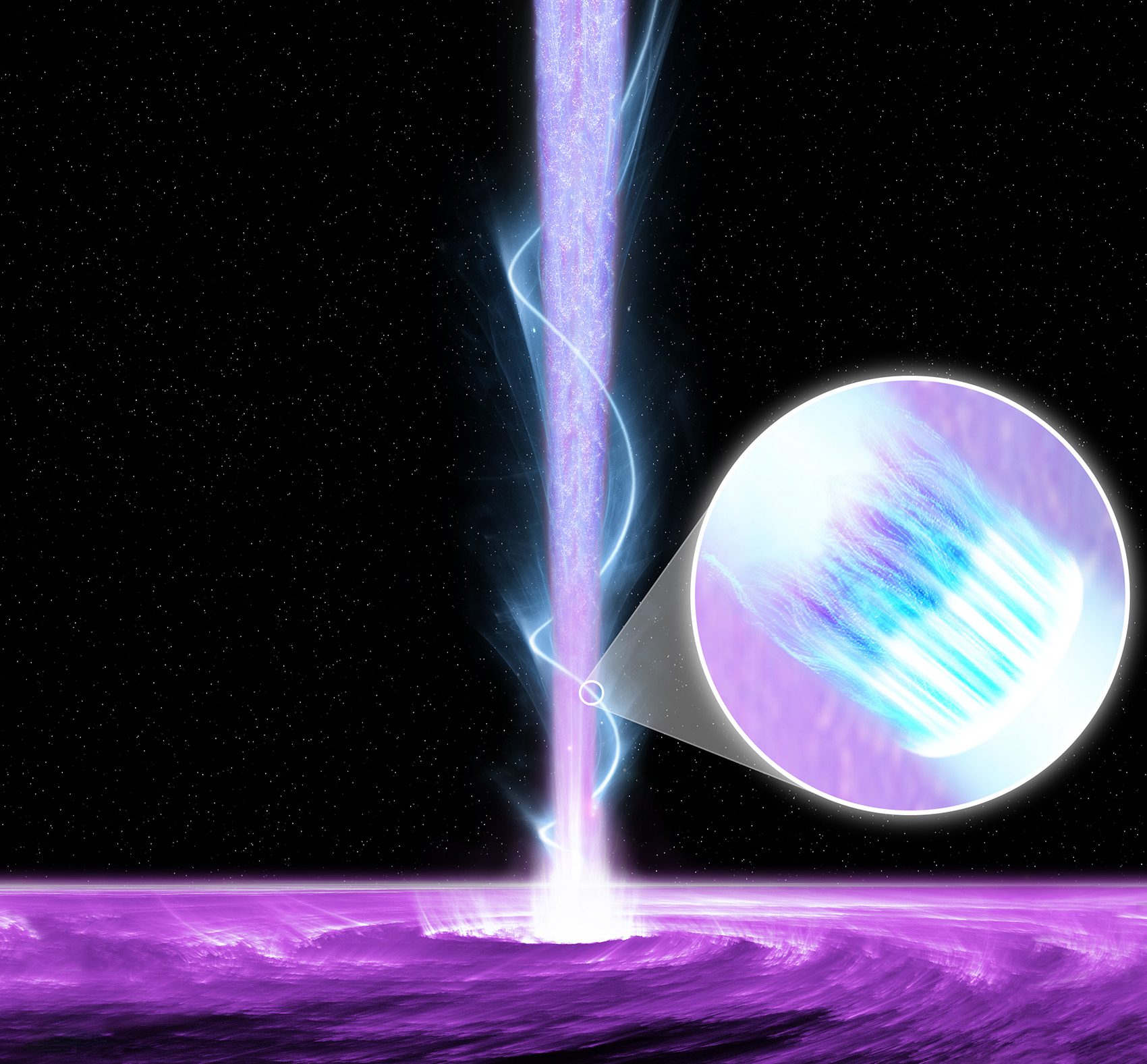NASA’s IXPE Fires Up Astronomers With New Blazar Findings

|
Announcement Date :
|
The universe blazes with energy, not just among stars, nebulae, and teeming galactic nurseries, but also erupting as high-speed jets of ionized matter from some of the most powerful destructive sources ever known – active galactic nuclei known as “blazars.”
This week, an international team of astrophysicists, including a large number of researchers and students of the Institute of Astrophysics - FORTH and the Dept. of Physics of the University of Crete, using data from NASA’s Imaging X-ray Polarimetry Explorer (IXPE), published new findings about the blazar dubbed Markarian 421, an active galactic nucleus and powerful gamma-ray source in the constellation Ursa Major, roughly 400 million light years from Earth.
"Markarian 421 is an old friend for high-energy astronomers,” said Italian Space Agency astrophysicist Laura Di Gesu, lead author of the new paper. “We were sure the blazar would be a worthwhile target for IXPE, but its discoveries were beyond our best expectations, successfully demonstrating how X-ray polarization enriches our ability to probe the complex magnetic field geometry and particle acceleration in different regions of relativistic jets.”
The new study detailing the IXPE team’s findings at Markarian 421 is available in the July 17 2023 edition of Nature Astronomy.
A blazar is so identified because it expels its powerful beam of ionized matter nearly directly at an observer – in this case, Earth-based ground and space telescopes and satellite imagers. That bright, highly detectable “blaze” of electromagnetic radiation results from the effects of relativistic space-time on the jet’s light as the jet hurtles away from the galaxy’s center at or near the speed of light, often creating a beam millions of light-years in length. Such jets may be expelled by a variety of powerful, heavy-mass phenomena, including pulsars, neutron stars, or the supermassive black holes long suspected to fuel blazars and other active galactic nuclei.
Despite decades of study, scientists still don’t fully grasp the physical processes that shape the dynamics and emission of relativistic jets expelled by blazars. But IXPE’s groundbreaking X-ray polarimetry capability – which measures the average direction of the electric field of light waves – gives them an unprecedented view of these targets, their physical geometry, and where their emissions originate.

“We had anticipated that the polarization direction might change but we thought large rotations would be rare, based on previous optical observations of many blazars,” said Herman Marshall, research physicist at the Massachusetts Institute of Technology in Cambridge and a co-author of the paper. “So, we planned several observations of the blazar, with the first showing a constant polarization of 15%.”
Remarkably, the initial analysis of the polarization data from IXPE appeared to show it dropped to zero between the first and second observations. It was then found that while the polarization degree remained constant, its direction was changing fast. During the six days of the IXPE observations, the direction of the polarization made slightly over a full 360 degree turn. “This is unlikely to happen by random motions of the polarization angle. We are most likely seeing real changes in the magnetic field of the jet” said Sebastian Kiehlmann, postdoctoral researcher at the Institute of Astrophysics (IA), who led the analysis to test the random rotation hypothesis.
Stranger still was that concurrent optical measurements from the RoboPol polarimeter at the Skinakas observatory in Crete. Those showed no change in stability or structure at all – even when the polarized X-ray emissions deviated.
“This is strong evidence that the X-ray emission traces a different region from the optical light” said Dmitry Blinov, postdoctoral researcher at IA.
The concept of a shockwave accelerating the jet’s particles is consistent with theories about the documented behavior of Markarian 501, a second blazar observed by IXPE that led to a published study in late 2022. The IXPE collaboration and multiwavelength partners are eager to conduct further observations of Markarian 421 and other blazars to learn more about these jet fluctuations and how frequently they occur.
Note: IXPE is a collaboration between NASA and the Italian Space Agency with partners and science collaborators in 12 countries. IXPE is led by NASA’s Marshall Space Flight Center in Huntsville, Alabama. Ball Aerospace, headquartered in Broomfield, Colorado, manages spacecraft operations together with the University of Colorado's Laboratory for Atmospheric and Space Physics in Boulder. IXPE’s observations of Markarian 421 were complemented with data gathered by partner observatories across the United States and in France, Japan, Spain, and Crete.
